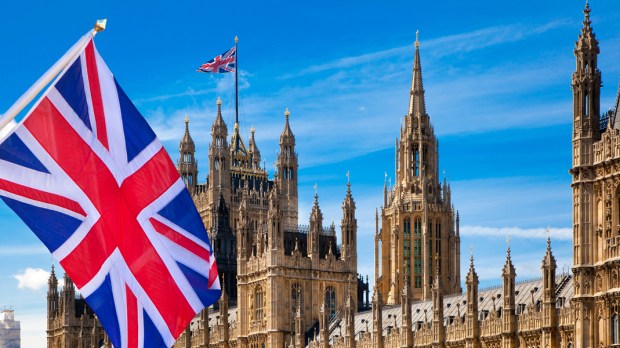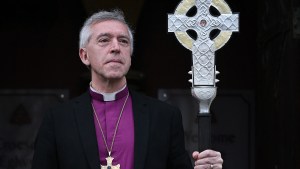Lenten Campaign 2025
This content is free of charge, as are all our articles.
Support us with a donation that is tax-deductible and enable us to continue to reach millions of readers.
If you’re a fan of the royals, or all things British, you’ll be familiar with the Union Jack flag: the flag that brings together Ireland, Scotland, and England and is used officially in the United Kingdom and its overseas territories. And with King Charles III’s coronation this weekend, if you’re tuning in, you won’t help but see it decorating the streets of London.
However, this flag doesn’t just depict the uniting of countries under one ruler, it also shows how some pretty impressive saints were central to these countries centuries ago. To give you a little insight, here’s a very brief history lesson:
The flag today is a slightly more elaborate design than the first Union Flag in 1606, which had been ordered by King James VI — the Scottish king who inherited the English and Irish thrones in 1603, becoming King James I of those lands.
The first Union Flag brought together England and Scotland. Central to the design was the red cross of St. George, England’s patron saint, which was superimposed onto the Saltire of St. Andrew — Scotland’s patron saint, represented by a blue flag with the white X-shaped cross. This flag was used on ships to show the unity and force of the two countries and two powerful saints.
St. George, according to legend, was the 3rd-century saint who boldly slayed a dragon — saving a king’s daughter and many more — but nevertheless was martyred for his faith not long after. The red cross, although not directly associated with St. George himself, was used by the Knights Templar centuries later, and is therefore symbolic of this warrior saint.
St. Andrew, along with his brother and fellow fisherman, Simon Peter, became a disciple of Jesus. Andrew was baptized by John the Baptist, and was known as Jesus’ first disciple. The white cross of Scotland’s flag echoes the more unusual crucifixion of Andrew, who died on an X-shaped cross.
A couple of centuries later, the Union Jack of today was designed when Great Britain and Ireland were unified in 1801. This new flag incorporated the red Saltire of St. Patrick — Ireland’s much-loved patron saint.
As is so often the case with Ireland’s history with the saints, the origins of the flag and St. Patrick are a cause of dispute. However, the 5th-century saint, who helped bring Christianity to Ireland (and of course was said to have driven out those snakes!), is boldly represented with the bright red X-shaped cross.
So when the crowds are busy waving their Union Jacks in support of the new King Charles III this weekend, they won’t just be celebrating a historic moment in regal history, they’ll also be highlighting three very important saints in the history of the Church.



